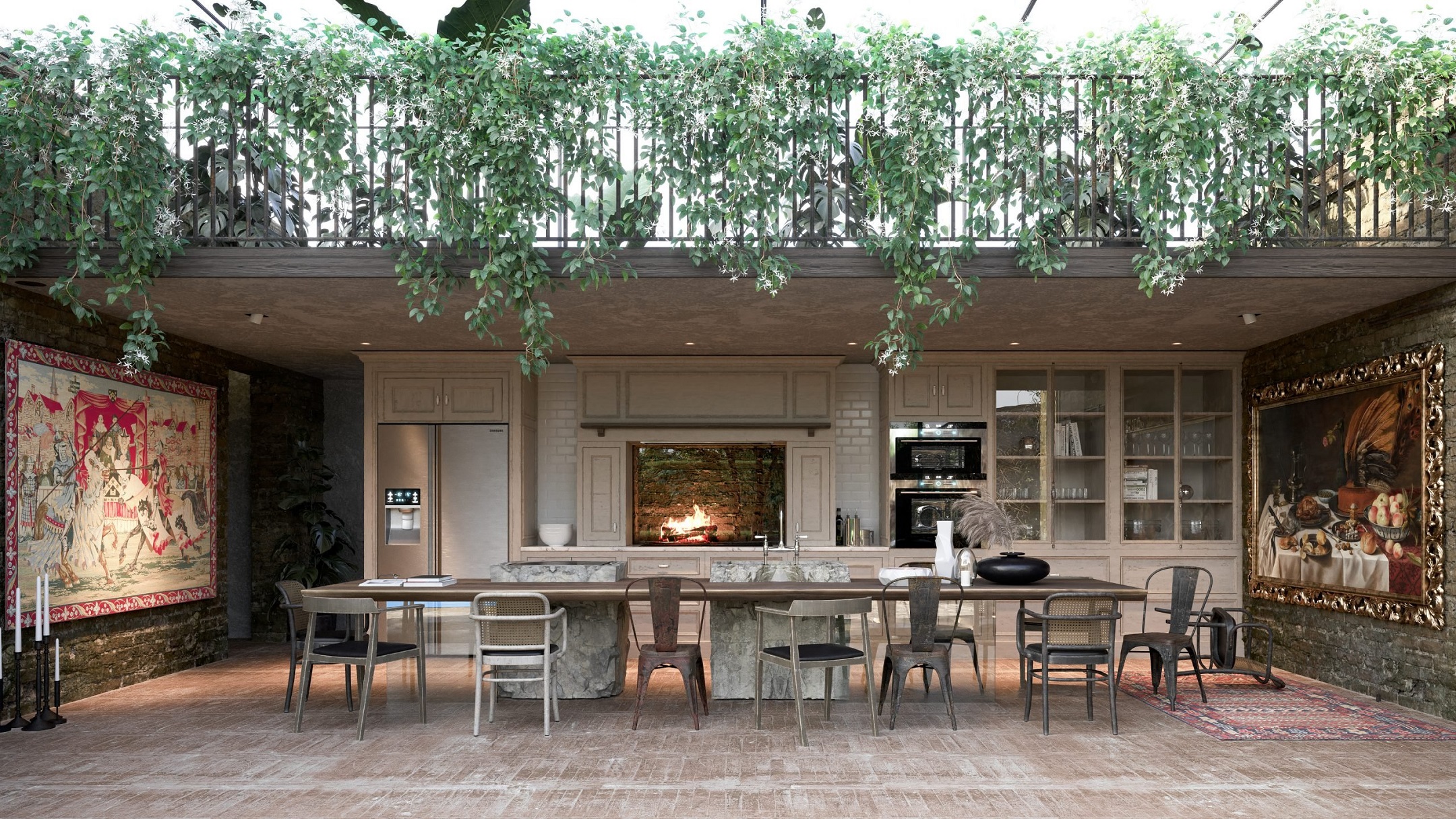Modern 3D hyperrealistic visualizations can blow one’s mind with their lifelikeness and beauty. CG images can depict literally anything, including future exterior or interior design of a building, in photorealistic quality and great detail. This means that with 3D architectural visualization, architects and designers can present their projects with previously unachievable impact. They can give their audience a sneak peek into the future, showing how their masterpieces will actually look when brought to life.
It is barely possible to tell well-made architectural CGI from a professional photo. So, while looking at the amazingly hyperrealistic renders, one might wonder: what does it take for 3D artists to achieve such a level of professionalism? How do they manage to depict yet non-existing objects with an incredible level of detail? Obviously, mastering such a craft has to imply something more than just learning to work in 3D software. Of course, the latter is vital, but it’s only a part of the recipe for success. So, what are the other ingredients?
To master the creation of hyperrealistic visuals, 3D designers follow 5 important principles. And they do it not only when working. They practice some of these principles in their everyday life, which helps them to evolve and refine the skills of creating photoreal CGI. Wondering what those magic rules are? Read on to learn about 5 things 3D artists do to achieve photorealism in CG visualizations!
#1. Seeing the world with fresh eyes

To be able to create hyperrealistic visualizations, a 3D artist has to look at the world in the way kids do: with curiosity and excitement. This way, 3D specialists can dismiss the preconceptions that they might have about things and experience them like for the first time.
Observing the world with fresh eyes allows for noticing small yet important details and then recreating them in photoreal CGI. These can be creases on fabrics, dents and scratches on wood, reflections on glass and metals, etc. So, anywhere a 3D designer goes, they pay attention to the surfaces of objects, patterns on these surfaces, watch how light falls on them, and so on. Depicting such things accurately is a must to mimic real life in hyperrealistic CG visualizations.
#2. Practicing photography

In their works, 3D artists strive to achieve photorealism, not simply realism. Which means that they need to create CG visuals that look like professional photos. That is why the next secret for creating hyperrealistic visualizations is learning photography.
So, most of the talented 3D visualizers have a camera and exercise regularly in making appealing photos. This way, they refine their knowledge of composition principles, such as the rule of thirds and the golden section. Practicing photography also helps to understand how to choose camera angles and highlight focal points. It allows one to see how lighting works and which colors look good together.
Apart from taking pictures with a camera, 3D specialists also spend much time examining professional photos in books, online galleries, exhibitions, and so on. This way, they understand the art of photography better and figure out how to use it in hyperrealistic 3D visualizations.
How can 3D rendering bring a public building concept to life?
#3. Finding a balance between technicalities and artistry

The profession of a 3D artist is a unique one since it requires both technical and artistic skills. Both are absolutely vital for making hyperrealistic visualizations. And what is more, they are useless separately from each other. To be truly professional, a 3D visualizer has to find a balance between artistry and technicalities. So, how exactly do 3D specialists achieve it?
To keep up with the ever-changing 3D visualization technologies, 3D artists never stop to learn new 3D modeling and rendering programs. They spend much time mastering updated versions of software they are already familiar with as well as studying new CGI-making tools. Also, 3D designers keep an eye on the development of 3D technologies in general. They track the progress in the most innovative fields such as VR, AR, and 3D printing.
At the same time, 3D specialists need to feed their artistic drive. For this, they search for creative inspiration in classic and modern art, pop culture, and other sources. They read fiction books, visit exhibitions, play video games, watch movies, listen to music, and travel. All in all, they do everything that helps to get inspired for creating beautiful hyperrealistic visualizations.
#4. Telling stories and evoking emotions with CG visualizations

A good CGI artist does not just make photoreal 3D visualizations. He or she creates hyperrealistic visuals that tell a story and evoke emotions with the viewer. For this, 3D visualizers learn to turn CG images into powerful triggers for the imagination. To achieve it, they use contextual elements smartly. Namely, 3D specialists master the art of using small details for letting the viewers grasp the feel of the depicted place.
For instance, in a 3D render above, the visualizer added elegant candles in the corner and yellow flames in the barbecue. He also arranged chairs around the big table in a bit messy way, with one of them even lying on the floor. In this way, the 3D designer conveyed the atmosphere of a warm, cozy space that calls for a party with friends or a big family dinner. This is not just a hyperrealistic CG picture of a kitchen anymore — it is a visual story about life in this dwelling.
#5. Being persistent and learning from mistakes

No one becomes a master of making hyperrealistic visualizations in a day. Achieving photorealism requires hard work, and failures are unavoidable along the way. That is why a good 3D artist is not afraid to fail and to go through every step more than once. He or she knows that practicing and making mistakes is the only way to evolve one’s skills as a 3D specialist.
So, beginner 3D visualizers work hard, and even if the first results come out to be different from what they had in mind, they do not stop trying. They are persistent and use a systematic approach. Also, 3D designers are very loyal to criticism at work, on professional forums, contests, etc. 3D specialists know that when clients or fellow visualizers criticize their works, they do with a good intention. Which is to point out one’s mistakes but not to offend the author personally. So, 3D specialists use feedback to improve their digital visualizations. This way, they become better at what they do and learn to produce hyperrealistic CGI.
Being a 3D artist requires dedication and passion. To make breathtaking hyperrealistic visualizations, one needs more than just learning 3Ds Max, V-ray, or some other software. Achieving photorealism requires continuous exploration of the world around and studying photography. One also has to balance their technical and artistic sides and to use storytelling in 3D visualizations. And, finally, becoming capable of making hyperrealistic CGI calls for hard work, persistence, and openness to criticism.
P.S. This article was inspired by a wonderful book called “Great Talks about Photorealism”. It was written by a talented Romanian archviz artist Bogdan Sasu. We recommend reading this book if you wish to delve more into the subject.
Get your project estimated in just 1 hour - fill out this brief!
Want your architecture and design projects to be visualized by professionals who pour their heart and soul into CGI? Contact us for 3D visualization services and get CG visuals that exceed your expectations!
Catherine Paul Catherine is a content writer and editor. In her articles, she explains how CGI is transforming the world of architecture and design. Outside of office, she enjoys yoga, travelling, and watching horrors.
Content Writer, Editor at ArchiCGI




